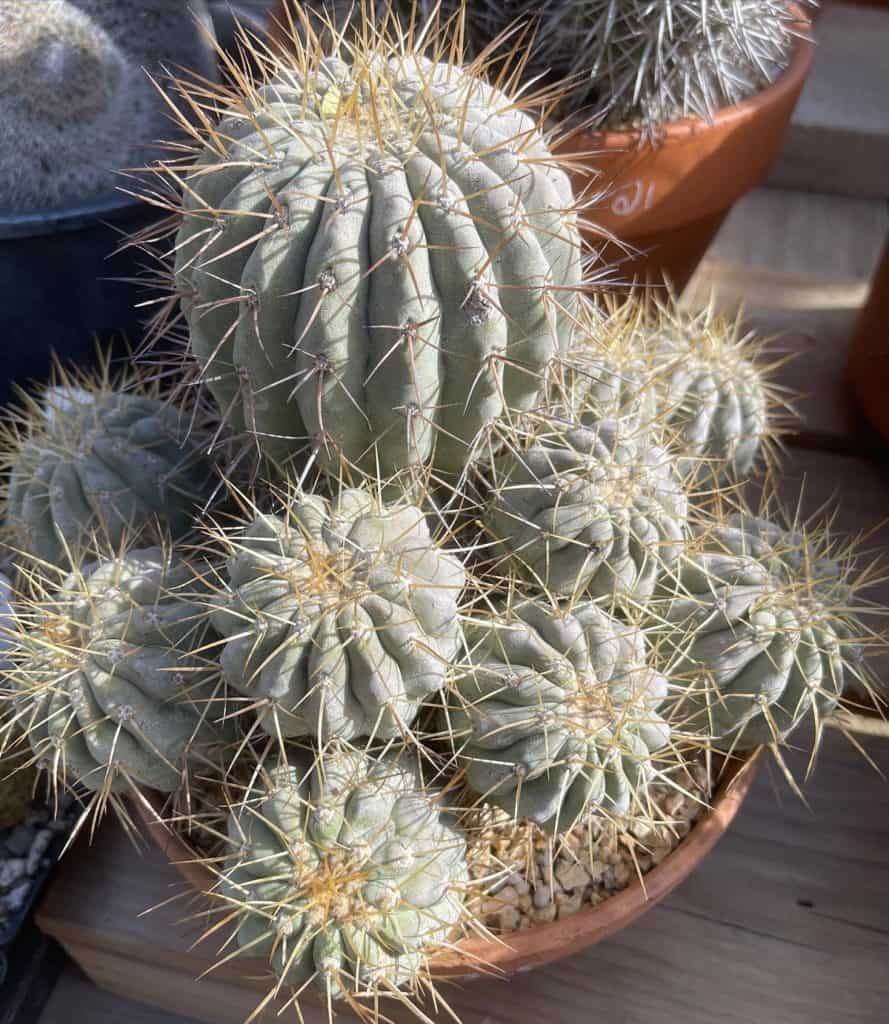How to Tame the Wild Copiapoa haseltoniana in Your Own Garden
Deep in the arid Atacama Desert of Chile lives a curious cactus with a wild, untamed appearance. Meet Copiapoa haseltoniana – a spiky, clump-forming marvel that has adapted to some of the harshest growing conditions on Earth. But don’t let its rugged exterior fool you; with the right care, you can transform this desert rebel into a well-behaved houseguest in your very own garden. Read on to discover the secrets of domesticating Copiapoa haseltoniana!

Contents
About Copiapoa haseltoniana
Native to the coastal deserts of northern Chile, Copiapoa haseltoniana is a low-growing, densely-spined cactus that forms large mounds or clumps over time. Its thick stems are ribbed and armed with vicious spines, interspersed with golden crowns of areoles. While fearsome in appearance, this resilient species has mastered the art of survival in its unforgiving homeland, making it an intriguing (and somewhat challenging) addition to cactus collections.
Related Post:
1,000 Types of Cactus [With Pictures]
How to Care for Copiapoa haseltoniana
Light
As a true sun-worshipper, Copiapoa haseltoniana thrives in direct, bright sunlight. Provide at least 6-8 hours of sunlight daily, ideally from an east or west-facing window. If summers are scorching where you live, filter the light with a sheer curtain during peak afternoon hours. For indoor growing, supplement with a quality grow light placed 12-18 inches from the plant.
Water
In keeping with its desert origins, this cactus prefers infrequent but deep waterings. During spring and summer (the growing season), provide enough water to penetrate the entire root zone, then allow the soil to fully dry before watering again. Cut back to a bare minimum in winter when growth is dormant. Overwatering is the kiss of death, so erring on the dry side is wise.

Soil
Copiapoa haseltoniana demands a very well-draining soil mix to prevent rot. Use a ready-made cactus/succulent mix, or create your own by blending one part potting soil with two parts coarse sand, small pebbles or perlite. A slightly acidic to neutral soil pH is ideal.
Fertilizer
Feed sparingly with a balanced fertilizer formulated for cacti and succulents when new growth emerges in early spring. Too much fertilizer can cause lush, unnatural growth that is prone to pests and disease.
Temperature
This heat-loving cactus prefers warm days around 75-90°F and cooler nights of 55-65°F. Avoid exposing it to freezing temperatures. Most homes provide suitable conditions indoors during winter.

Pruning
Pruning is generally unnecessary, but you can remove any dead or damaged stems to improve appearance and air circulation.
Potting and Repotting
Terracotta or ceramic pots with excellent drainage are perfect homes for Copiapoa haseltoniana. Only repot when the root system outgrows its current container, likely every 3-5 years. Handle with extreme care to avoid injury from the sharp spines!
Pests and Problems
Despite its fierce appearance, Copiapoa haseltoniana can fall victim to a few pesky insect invaders and diseases if growing conditions aren’t ideal. Keep a watchful eye for:
- Mealybugs – These cotton-like pests cluster in crevices and feed on plant juices, excreting a sticky honeydew.
- Spider mites – Tiny yellow or red arachnids that spin dense webbing, particularly in hot, dry conditions.
- Fungal diseases – Overly moist soil and poor air circulation promote fungal infections like root/stem rot.
- Shriveling/Death – Sudden shriveling or blackening of the stem is likely due to overwatering or severe underwatering.
The best defense is proper watering, and airflow, quarantining new plants, and regularly inspecting for issues. Treat insect infestations promptly with an insecticidal soap, neem oil or physically removing the pests. Discard any plants with advanced rot to prevent spread.
Copiapoa haseltoniana Propagation Guide
While seeds offer an authentic propagation method, they can be challenging to source and germinate successfully. A far easier route is to root offsets (plantlets) that form around the base of the parent plant. Here’s how:
- Use a clean, sharp blade to carefully detach a healthy offset (3-5 inches tall is ideal).
- Allow the cutting to form a callus over 7-10 days before replanting.
- Fill a small pot with well-draining cactus mix.
- Make a hole and insert the calloused end of the offset.
- Lightly water the soil and place in bright, indirect light.
- Once rooted in 4-6 weeks, slowly acclimate to full sun and care for as a mature plant.
With a little patience and the proper domestication techniques, you too can enjoy the spiky splendor of this desert native in your own outdoor oasis or indoor garden! Taming Copiapoa haseltoniana is an adventure best savored one prickly step at a time.
